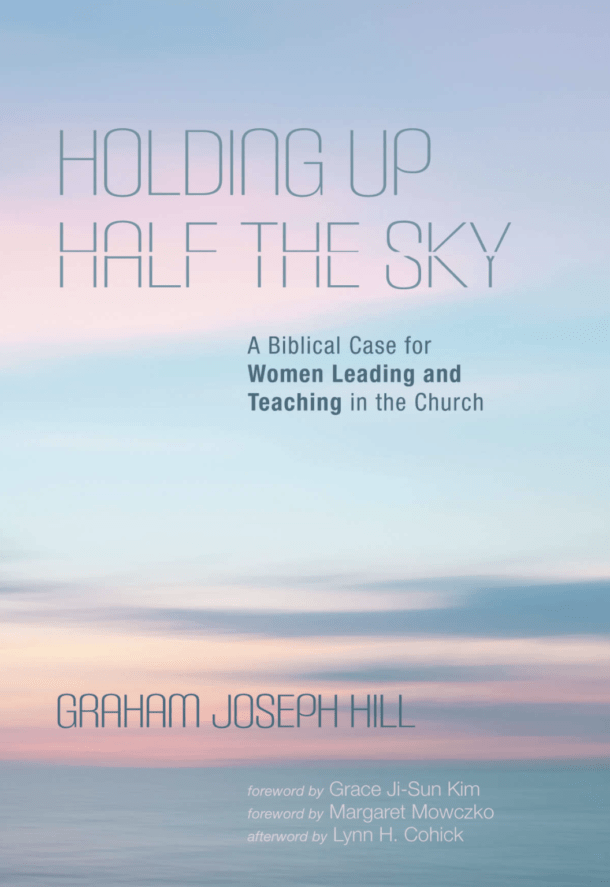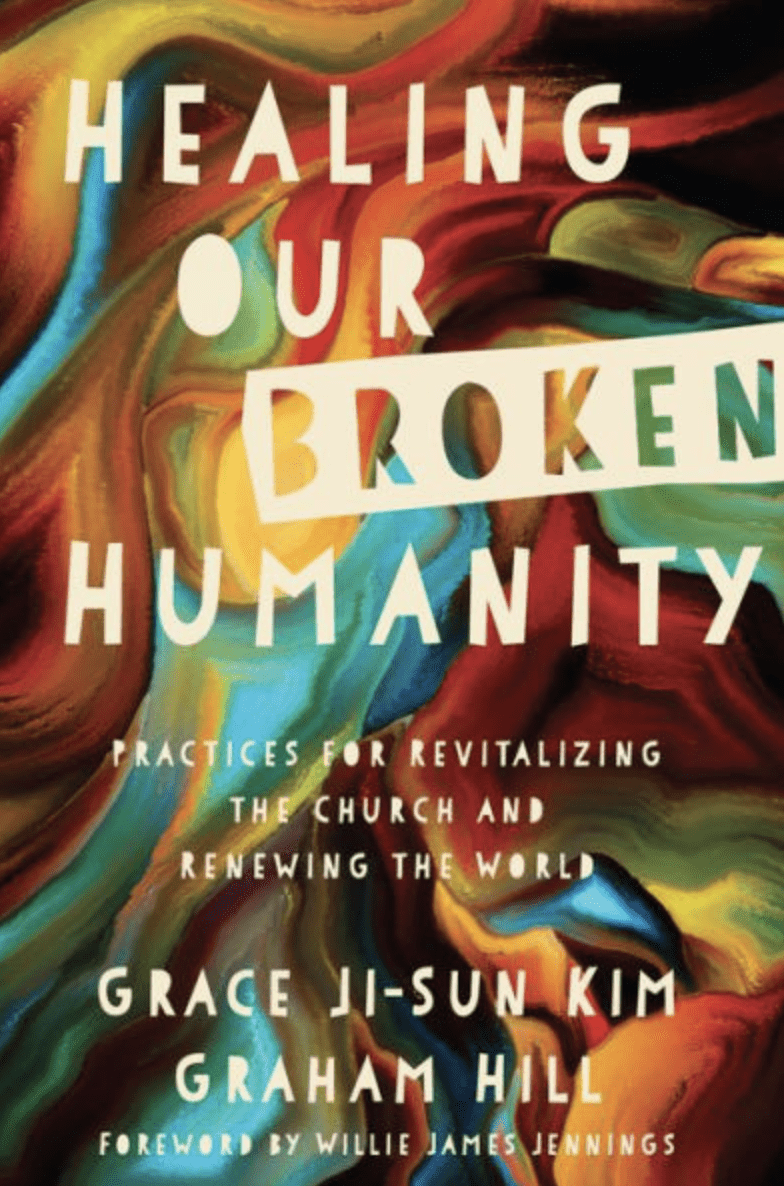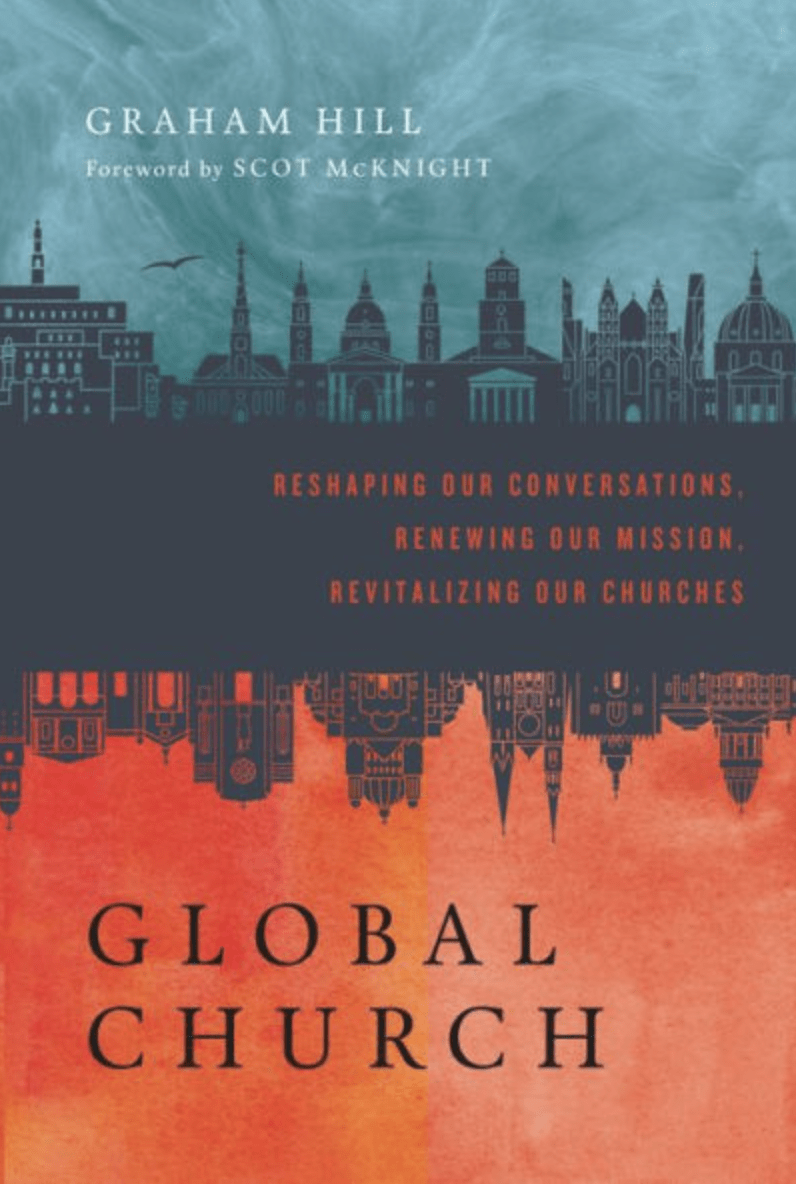I was in church planting with a fellow planter for much of my twenties. During that period of my life, church planting was everything. There was no financial support from a denomination, so I worked full-time to support myself. While working full-time, I gave every spare moment and ounce of energy into planting this church in Sydney, as did my mentor and fellow planter.
By the end of that period, I was tired. I felt underprepared theologically and pastorally. I needed to get training, recharge, and retool for a lifetime of ministry and service.
It was a good decision. My experience in church planting made the subsequent four years at theological college much richer and more meaningful. The skills and abilities I learned as a church planter helped launch me into other forms of pastoral ministry, as well as writing books and leading within Australian theological colleges.
The competencies I learned in church planting—skills in pioneering, innovation, risk-taking, and leadership—have shaped my approach to pastoral ministry and theological education, giving me the passions and competencies to start fresh expressions, launch innovations, take risks, and step out in faith and trust God even when resources are limited, and the task seems overwhelming. Church planting shapes adventurous, visionary, pioneering spirits. Significantly, it can shape generous and welcoming communities and loving, humble, and prayerful hearts. If you walk in step with the Spirit while planting or innovating, you’ll move from relevance to prayer, popularity to ministry, and leading to being led. Henri Nouwen describes this spiritual and leadership growth journey in his book “In the Name of Jesus.”
In this blog, I reflect on some lessons I learned while church planting. These are just my lessons. They’re personal. They may not even reflect the feelings of our church planting team. It’s a long list, but it’s just my attempt to wrestle with what I learned during that time.
I won’t pretend my decade of church planting compares with the experience of those who’ve done it longer. But church planting was so demanding, challenging, exciting, painful, joyous, and all-consuming that I’ve reflected on some lessons I learned.
A Word on Church Planting as Co-Creation
Our language shapes how we perceive and participate in God’s mission (and relate to God, each other, and creation). Shifting from terms like “church planting,” “pioneering,” or “innovating” to “co-creating” reflects a deeper theological understanding of our relationship with God and creation. Instead of seeing ourselves as originators of new works, the language of co-creation emphasizes that we are apprentices—under-creators—working in partnership with God, the Creator. This theological shift acknowledges God as the primary agent in mission and creation, inviting us to join in God’s ongoing work.
In Genesis, we encounter God as Creator, forming an inherently relational and purposeful world. Humanity, made in God’s image, is entrusted with the stewardship of creation (Genesis 1:26-28), not to build autonomously, but to participate in God’s creative, redemptive purposes. This stewardship reflects our calling to be co-creators—agents who partner with God in nurturing life, justice, and flourishing. The term “co-creating” embodies the profound humility and dependence required of this role, a stark contrast to the more individualistic implications of “planting” or “pioneering.”
Jesus’s ministry reflects this co-creative posture. He invites his disciples to participate in God’s kingdom work (John 15:4-5), not as independent creators, but as partners relying on their abiding relationship with him. Likewise, in the New Testament, Paul’s vision of the church as a body (1 Corinthians 12) emphasizes cooperation, mutuality, and shared participation in Christ’s mission.
Makoto Fujimura’s theology of art and creation beautifully complements the idea of co-creation. Fujimura views creativity as worship grounded in God’s extravagant grace. He suggests that, as image-bearers of God, humans are called to bring beauty into the world, reflecting the generative and redemptive nature of God’s creative work. Fujimura speaks of “slow art” and “culture care,” emphasizing that our creative efforts are not about efficiency or productivity but cultivating beauty and restoring brokenness. This aligns with co-creation, where our role is not to innovate for novelty but to participate in God’s ongoing work of renewal patiently. For Fujimura, creating—whether through art, community, or mission—is an act of healing, mirroring the way God creates and re-creates, making all things new. This approach invites a more contemplative, sacramental posture in our work with God, seeing the creative process as one that fosters life, hope, and restoration.
Co-creation thus reframes our mission efforts (church planting, Fresh Expressions, pioneering, or innovating ministries) as joining God in what God is already doing, co-creating with God as God’s under-creators, with a deep awareness of our role as apprentices. This theological language encourages collaboration with the Spirit, humility in leadership, and recognizing God’s sovereignty in the unfolding of God’s kingdom rather than seeing ourselves as autonomous creators of new ventures.
Some Personal Lessons from Church Planting
Here are some personal things I learned while church planting.
1. THEOLOGICAL FOUNDATIONS AND PURPOSE
Church planting isn’t about church planting but glorifying God and joining God’s mission.
It’s about glorifying God and our Lord Jesus Christ and joining with God in mission—and mission is about discipleship, love, gospel, shalom, the kingdom of God, and much more. My neighbourhood doesn’t need another church. It requires a community of disciples who join God’s mission, commit to a distinct life together, and love their neighbourhood and neighbours.
The Church of England reminds us that mission has five marks:
TELL – To proclaim the Good News of the Kingdom
TEACH – To teach, baptise and nurture new believers
TEND – To respond to human need by loving service
TRANSFORM – To seek to transform unjust structures of society, to challenge violence of every kind and to pursue peace and reconciliation
TREASURE – To strive to safeguard the integrity of creation and sustain and renew the life of the earth
Church planting is about the dismantling of dichotomies and divisions.
Sacred/secular, evangelism/justice, pastoral/planting, etc. After a while, none of these dichotomies or divisions make sense, and you realize that if you don’t let them go, they’ll derail and disfigure the community.
Church planting makes you realize how dependent you are on others.
Want to discover how inadequate, unprepared, ill-equipped, and broken you are? Plant a church. This is why church planters need training, support, encouragement, connection with other planters, coaching, and mentoring. This support must come from established churches, other church planters, training groups, denominational bodies, and more. What do you discover you need? Advocacy, friendship, feedback, encouragement, training, finance, peer-to-peer conversations, accountability, resources, partnerships, and more.
Church planting tests and deepens your trust in God.
You struggle for money. You feel out of your depth. You worry about your family. You feel like you’re taking three steps forward, then two steps back. And you learn to trust God. At its heart, church planting is about learning to pray and to trust.
Church planting is deeply relational.
Here’s the thing. No church plant will survive without deep friendships, healthy marriages (if you are married), intentional neighbouring, and many other relationships. This is one of the most relational vocations and calls one can imagine. A ferocious commitment to relationships is critical to church planting.
Church planting depends on imagination.
There is where beauty, art, literature, theology, creation, architecture, stories, films, and more come in. Healthy church planting requires fertile imagination. How do we creative, innovate, pioneer, and find beauty and meaning without imagination?
Discussion Questions for Part 1
- How does the concept of joining God’s mission shift your perspective on church planting from starting a new church to building a community of disciples?
- In what ways can we, as a church or community, dismantle the divisions between sacred/secular, evangelism/justice, and other dichotomies?
- How do we learn to rely on others in our spiritual journey, and how does this reflect the broader mission of the church?
2. THE EXPERIENCE AND EMOTIONS OF CHURCH PLANTING
Church planting is many experiences and feelings at once.
It’s exciting and terrifying, fun and tedious, inspiring and deflating, growing and declining, relational and lonely, pioneering and shepherding, meaningful and heartbreaking, and so much more.
Church planting often makes you feel out of your depth, out of your comfort zone, and out of your mind.
You try so many things that fail. Some succeed. You take so many risks. Some pay off, and some are a disaster. You wonder whether you’re out of your mind, but you keep trying anyway, clutching to the vision God has placed in your heart, your love for God’s people, and your passion for your neighbourhood.
Church planting makes you feel like an imposter.
Deep inside, you wonder whether people will discover you’re not up to the task. You don’t have the skills, vision, training, temperament, or wisdom. And everyone is on the verge of finding this out. You’re not an imposter. So, the Spirit keeps challenging you on this insecurity. The Spirit invites you into a different sense of self and an identity rooted in Christ. The Spirit keeps whispering, “Will you let this go and trust me?”
Church planting is about holy discontent.
You are restless with the status quo, and you keep asking God to help you bring change, hope, and renewal. This holy discontent burns in your heart and shapes so much of what you do and how you pray, speak, and act.
Church planting is a very personal experience and story.
Some experiences are common to all church planters, but many experiences and stories are deeply personal and unique. We all need safe spaces to tell these stories and encourage and support each other.
Church planting takes a pioneering, apostolic, entrepreneurial spirit.
We often think of this as a “maverick” spirit. But it’s not. The apostolic, pioneering types in Scripture weren’t isolated mavericks. They served in a team. They joined a community of apostles, prophets, pastors, teachers, and evangelists. They welcomed accountability and obligation. And they took risks, broke new ground, pioneered new communities, and refused to be constrained by small thinking. Pioneers aren’t mavericks but are ground-breakers and crucial to the church’s future. And they often engage in social and business entrepreneurship. They usually combine church planting with bi-vocational (co-vocational) life, fundraising, launching startups and fresh expressions, charities, and other organizations.
Discussion Questions for Part 2
- What emotions have you experienced when stepping into a new role or ministry, and how do you manage the mix of excitement and fear?
- How do you respond when you feel out of your depth or like an imposter in your faith or leadership roles?
- How can we cultivate a healthy balance between holy discontent (wanting change) and contentment in our personal and community lives?
3. THE IMPORTANCE OF COMMUNITY
Church planting needs a community of disciples, a community of leaders, a community of neighbors, and a community of churches.
These three things are necessary for a church plant to thrive (and each is an interconnected community): disciples, leaders, and neighbors.
Church plants need a community of disciples who celebrate the Lord’s Supper, pray, fast, read Scripture, share communal meals, share economic resources, and serve and love each other and their neighbors.
Church plants need a community of leaders who release us from thinking one or two people can build a church. This community of leaders expresses the fivefold gifts: pioneers, prophets, shepherds, teachers, and pastors.
Church plants need a community of neighbors who remind us that God was working in their neighborhood long before we arrived and will be here long after we’re gone. Our neighbors help us see the kingdom of God among us. We join our neighbors in discovering God’s presence, reconciliation, hope, love, and restoration.
Church plants need a community of churches that connects them to the broader Body of Christ. This community of churches and their leaders must support them, stand with them, cheer them on, admonish them, and help them see their place in the bigger picture.
Church planting is a team sport, not an individual sport.
Sport isn’t the best metaphor, but I hope you get my point. Charismatic, dynamic, talented, individualistic, egotistical, narcissistic, and extraordinarily gifted people don’t make great church planters. Great church planters embrace a confident humility. They understand that the church’s health, vitality, and mission depend on teamwork, inclusion, community, humility, relationship, and, most importantly, love—within the church community and outward toward its neighbors.
Church planting needs large doses of play.
After a while, I became tired and overworked. I forgot how to play. I’ve concluded that long-term, sustainable ministry requires large doses of play. For me, that means days at the beach, going to the gym, taking up a sport or hobby, joining local community groups and clubs, walking my dog, reading novels, and going to the movies with friends. All the talk about self-care can sometimes feel a bit boring, but I’ll take play any day!
Church planting shows you the power of forgiveness.
I made many mistakes, hurt people, broke promises, acted without integrity, and showed terrible leadership.
But I also did many things well. I helped people, kept promises, sought God’s help, and tried hard to show the true nature of Christlike Christian leadership.
In all of this, I learned the power of forgiveness. I saw the extent of people’s grace, patience, love, and hope.
Discussion Questions for Part 3
- What does a healthy balance between leadership and discipleship look like in a church plant, and how can we foster that balance?
- How do you think engaging with neighbors shapes the mission of a church plant? How do we learn to see God’s work already present in our communities?
- In what ways can play and rest become essential to sustaining long-term ministry and leadership?
4. SPIRITUAL PRACTICES AND LEADERSHIP
Church planting is about reflective engagement.
In church planting, you discover how interconnected action, community, theology, and mission are. Each deepens and relies on the other. Action and reflection go hand in hand, and those who don’t seek to make the most of that quickly get into trouble.
Church planting is about praying like you’ve never prayed before.
You are so out of your depth, you have so many needs, and you’re so dependent on God that you start praying and fasting like crazy. You understand, practically and tangibly, that you are utterly reliant on God and prayer.
Church planting depends on hospitality.
It feels like people enter every part of your life. You embrace a deeper commitment to hospitality and welcome with appropriate boundaries, or you’re in deep trouble. You discover that everything depends on hospitality: community, worship, mission, discipleship, leadership, witness, and more. This isn’t a one-way hospitality. People (in the church and the neighborhood) welcome you and embrace you in humbling, astonishing ways. You discover the centrality of hospitality to life, faith, community, and witness.
Church Planting requires a contemplative spiritual life.
I recently read “The Way of the Heart: Desert Spirituality and Contemporary Ministry” by Henri Nouwen. In his characteristic style, Nouwen shows how three features of desert spirituality (solitude, silence, and prayer) can renew our spiritual lives and serve as antidotes to our modern problems of busyness, noisiness, and prayerlessness. The Spirit confronts our desires and compulsions as we encounter Jesus in solitude, silence, and prayer. In our secular, shallow, busy, selfish age, our compulsions threaten to lead us away from God and erode our identity, humility, and ability to show generosity, compassion, and love. The desert fathers inspire us to push back against the tendencies of our age rather than drift along passively, reflecting the diseases and dysfunctions of the heart that consume modern societies.
“Our identity, our sense of self, is at stake. Secularity is a way of being dependent on the responses of our milieu. The secular or false self is the self which is fabricated, as Thomas Merton says, by social compulsions. ‘Compulsive’ is indeed the best adjective for the false self. It points to the need for ongoing and increasing affirmation. Who am I? I am the one who is liked, praised, admired, disliked, hated or despised. Whether I am a pianist, a businessman or a minister, what matters is how I am perceived by my world. If being busy is a good thing, then I must be busy. If having money is a sign of real freedom, then I must claim my money. If knowing many people proves my importance, I will have to make the necessary contacts. The compulsion manifests itself in the lurking fear of failure and the steady urge to prevent this by gathering more of the same—more work, more money, more friends” (pages 22–23).
God does the inner work of transforming our desires, neuroses, narcissism, and compulsions, leading us toward a more humble, contemplative ministry.
Church planting needs a community of leaders and disciples.
For a church plant to thrive, it requires three interconnected communities: disciples, leaders, and neighbors.
A thriving church plant needs a community of disciples who are committed to practicing their faith together. This includes celebrating the Lord’s Supper, praying, fasting, reading Scripture, sharing communal meals, pooling resources, and serving both one another and their neighbors with love.
Equally important is a community of leaders who recognize that building a church is not the responsibility of just one or two individuals. These leaders embody the fivefold gifts—pioneers, prophets, shepherds, teachers, and pastors—working together to guide and grow the church.
Church plants also need a community of neighbors who remind us that God has been at work in the neighborhood long before we arrived and will continue long after we are gone. By engaging with our neighbors, we gain a greater awareness of God’s presence and the ongoing work of reconciliation, hope, love, and restoration within the community.
Additionally, a church plant needs the support of a wider community of churches. These churches connect the new plant to the broader Body of Christ, providing encouragement, guidance, and accountability, while helping it find its place within the larger kingdom mission.
Discussion Questions for Part 4
- How does hospitality reflect the core of Jesus’ mission, and how can we practice hospitality with appropriate boundaries in our communities?
- Reflect on the role of prayer and fasting in a deeply dependent relationship with God. How can these practices be revitalized in your personal or group context?
- How can solitude, silence, and contemplation transform leadership in church planting or other ministry areas?
5. VISION AND DISCERNMENT
Church planting is about learning to have open ears and eyes.
For me, it was about learning to hear and see. What is God doing and saying? Where is the Spirit leading? How is Jesus present in my neighborhood? Where are the signs of hope, inclusion, renewal, and love in my city and neighborhood? What are my neighbors doing and saying, and hoping and feeling? How can I hear and see?
Church planting is like sailing.
You are constantly maneuvering the vessel with the wind. As a community, you continually discern what the Spirit says through meals, prayer, service, neighboring, Eucharist, Scripture, culture, suffering, and more. You can’t be rigid, inflexible, or too set on one course. You must go with the wind of the Spirit.
Church planting helps you discover the power of stories.
For me, it was a revelation to discover the power of story. I realized that my story, the church plant’s story, the neighborhood’s story, the culture’s story, and God’s story all intersect and inform and shape each other. Church planting made me think a lot about the power of these interdependent stories.
Discussion Questions for Part 5
- How do we cultivate a practice of listening to God’s direction in our personal lives and in the life of the community?
- The metaphor of sailing implies flexibility and sensitivity to the Spirit’s leading. What practices can we adopt to remain adaptable in our ministry?
- How does the power of stories—our own, our community’s, and God’s—shape our mission and vision for ministry?
6. NARCISSISM IN CHURCH PLANTING AND CHRISTIAN LEADERSHIP
I recently read “When Narcissism Comes to Church: Healing Your Community From Emotional and Spiritual Abuse” by Chuck DeGroat. It’s the best book I’ve read on narcissism in Christianity, especially among Christian leaders. Church planters and innovators are prone to narcissism, so we must consider how we (as a community) combat this problem.
DeGroat quotes Lasch when he writes that narcissism is “longing to be freed from longing” (i.e. longing to be free of shame, failings, and humanity through visions, strivings, and masks of grandiosity. “Human limitation, fragility, and weakness hurt too much,” so narcissists find ways to hide behind a mask). The narcissistic mask is grandiose, attention-seeking, entitled, and unempathetic, covering deep wells of shame, a sense of vulnerability, and a fear of being exposed as inadequate or “human.” Narcissism and narcissistic systems need hiddenness and secrecy to survive, fearing that their shame and failings will be brought out into the light and avoiding the truth of weakness and vulnerability.
Christianity offers profound opportunities for people to avoid their deep inner shame, longing, and humanity through platform, performance, stage, power, branding, recognition, followers, and acclaim. “Ministry is a magnet for a narcissistic personality—who else would want to speak on behalf of God every week? While the vast majority of people struggle with public speaking . . . pastors do it regularly [and] with ‘divine authority’” (page 19).
DeGroat offers so much in this work, including how enneagram personality types help us understand the nine faces and types of narcissism, how to confront and heal from narcissistic leaders and church systems, how to understand the inner life of a narcissist, and how to heal ourselves and the church from narcissistic abuse. At times, I felt his correlation between narcissistic and enneagram types was a stretch, but it was a creative and insightful framework nonetheless.
I value the way DeGroat shows how narcissism is our collective problem (our church cultures and systems encourage and support narcissism, including the way we choose church planters, innovators, and leaders) and how we all need to examine our role in dealing with our inner narcissistic tendencies, especially in the age of social media.
As we consider church planters, some of our tests for “apostolic, pioneering, innovative leaders” seem designed to reward and amplify narcissism rather than the humble, servant way of Jesus Christ. DeGroat also speaks of the characteristics of the “fauxnerable Christian leader” who uses carefully curated “vulnerability” to cover their narcissism and put the spotlight on themselves.
DeGroat believes that transformation and change for the narcissist (and narcissistic church systems) are possible, but it’s a slow, painful, vulnerable, honest, and courageous process.
Like so many others, I’ve been hurt by narcissistic Christian leaders who could not see themselves or understand the impact of their behaviours—and I’ve felt let down by governance groups that refused to confront narcissistic abuse. As someone who has struggled for a few years to confront my selfish tendencies and the impact it has on others (I’m not a narcissist according to clinical definitions but, like many others, struggle against the pull toward narcissistic or selfish tendencies), I found deGroat’s insights into how to heal from our inner narcissism helpful and his compassion sincere.
This is a book every Christian ministry team, board, and eldership should read as we seek to deal with the widespread narcissism among Christian leaders and church systems today.
Discussion Questions for Part 6
- How can we identify and address narcissistic tendencies within church leadership or our own lives? What practical steps can we take to avoid these pitfalls?
- How can churches build systems that encourage humble servant leadership rather than feeding narcissism?
- What role does vulnerability play in Christian leadership, and how can we distinguish between authentic vulnerability and “fauxnerability” that seeks attention?





